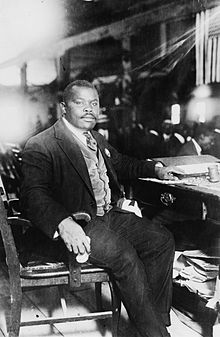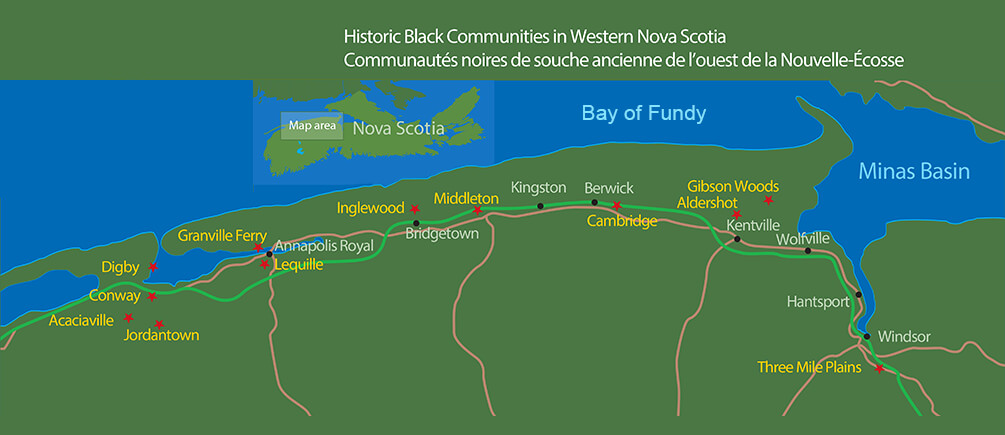We are proud to feature Marcus Garvey Jr. as part of our Legacy Coffee Series.

Marcus Mosiah Garvey Jr. born August 17, 1887 and died June 10, 1940, was a Jamaican political activist, publisher, journalist, entrepreneur, and orator. He was the founder and first President-General of the Universal Negro Improvement Association and African Communities League (UNIA-ACL, commonly known as UNIA), Ideologically a black nationalist and Pan-Africanist, his ideas came to be known as Garveyism.
Born to a moderately prosperous Afro-Jamaican family in Saint Ann’s Bay, Colony of Jamaica and apprenticed into the print trade as a teenager. Working in Kingston, he became involved in trade unionism before living briefly in Costa Rica, Panama, and England. Returning to Jamaica, he founded UNIA in 1914. In 1916, he moved to the United States and established a UNIA branch in New York City’s Harlem district. Emphasising unity between Africans and the African diaspora, he campaigned for an end to European colonial rule across Africa and the political unification of the continent. Although he never visited the continent, he was committed to the Back-to-Africa movement, arguing that many African-Americans should migrate there. Garveyist ideas became increasingly popular and UNIA grew in membership. His views did divide Garvey from other prominent African-American civil rights activists such as W. E. B. Du Bois who promoted racial integration.
Committed to the belief that African-Americans needed to secure financial independence from white-dominant society, Garvey launched various businesses in the U.S., including the Negro Factories Corporation and Negro World newspaper. In 1919, he became President of the Black Star Line shipping and passenger company, designed to forge a link between North America and Africa and facilitate African-American migration to Liberia.
Garvey was a controversial figure. He nevertheless received praise for encouraging a sense of pride and self-worth among Africans and the African diaspora amid widespread poverty, discrimination, and colonialism. He is seen as a national hero in Jamaica, and his ideas exerted a considerable influence on such movements as Rastafari, the Nation of Islam, and the Black Power Movement.
He established more than 1,100 UNIA Halls in more than 40 countries including three in Cape Breton, Nova Scotia. The Glace Bay Hall opened in 1916 to help mine workers from the West Indies settle in Cape Breton. Initially, it served as a hotel for the black mine workers who could not afford housing on the low wages they earned. It later served as a community hall and was the location of wakes and weddings for members of Glace Bay’s black community. Garvey visited the Glace Bay UNIA Hall in 1928 providing the audience a memorable speech. The Glace Bay UNIA Hall is the only one left standing in Canada.
Under Garvey, UNIA’s focus was on achieving economic independence for the African diaspora. In Garvey’s opinion, “without commerce and industry, a people perish economically. The Negro is perishing because he has no economic system”. In the U.S., he promoted a capitalistic ethos for the economic development of the African-American community. He wanted to achieve greater financial independence for the African-American community, believing that it would ensure greater protection from discrimination. An admirer of Booker T. Washington’s economic endeavours although critical of his individualistic focus: Garvey believed African-American interests would best be advanced if businesses included collective decision making and group profit sharing. While in Harlem, he envisioned the formation of a global network of black people trading amongst themselves, believing that his Black Star Line would contribute to this aim.
Garvey was a polarizing figure. It has been noted that he was “revered and reviled in equal measure” and that views on him divided largely between two camps, “one that wants to skewer him as a charlatan and the other that seeks to elevate him to the status of a saint”. Garvey has received praise from those who see him as a “race patriot”. Many African-Americans see Garvey as having encouraged a sense of self-respect and pride among black people.
Garvey attracted attention chiefly because he put into powerful ringing phrases the secret thoughts of the Negro world. He told his listeners what they wanted to hear—that a black skin was not a badge of shame but rather a glorious symbol of national greatness. He promised a Negro nation in the African homeland that would be the marvel of the modern world. He pointed to Negro triumphs in the past and described in glowing syllables the glories of the future. When Garvey spoke of the greatness of the race, Negroes everywhere could forget for a moment the shame of discrimination and the horrors of lynching.
While living in the U.S., Garvey was often referred to—sometimes sarcastically by white critics —as the “Negro Moses”, implying that like the eponymous Old Testament figure, he would lead his people out of the oppressive situation they lived in. He was however as “Jamaica’s first national hero”, while being included on the 2002 list of 100 Greatest African Americans. At the time of his return to Jamaica in the 1920s, he was “just about the best known Black man in the whole world.” His ideas influenced many black people who never became members of UNIA.
Garvey’s work was important largely because more than any other single leader he helped to give Negroes everywhere a reborn feeling of collective pride and a new awareness of individual worth.” Garvey, along with W.E Du Bois, deserved to be seen as the “father of Pan-Africanism”, while the others have called him one of the greatest Pan-African leaders of the time” and as the “patron saint” of the black nationalist movement.
During a trip to Jamaica, Martin Luther King and his wife Coretta Scott King visited Garvey’s shrine on 20 June 1965 and laid a wreath. In a speech King told the audience that Garvey “was the first man of color to lead and develop a mass movement. He was the first man on a mass scale and level to give millions of Negroes a sense of dignity and destiny. And make the Negro feel he was somebody.” Garvey and his ideology ‘Garveyism’ contributed to the formation of the multicultural education movement during the 1960s. Both “Garveyism and multicultural education share the desire to see students of color learning and achieving academic success”, and both allotted significant attention to generating racial pride.
A statue of Garvey stands along the Harris Promenade in San Fernando, Trinidad and Tobago, while Garvey’s birthplace, 32 Market Street, St. Ann’s Bay, Jamaica, has a marker signifying it as a site of importance in the nation’s history. In 2012 the Jamaican government declared August 17 as Marcus Garvey Day. The Brownsville neighborhood in Brooklyn, New York City, is home to Marcus Garvey Village, whose construction was completed in 1976. This building complex is home to the first energy storage micro grid at an affordable housing property in the country. It will use the energy storage system to cut electricity costs, improve grid reliability, and provide backup power during extended outages.


